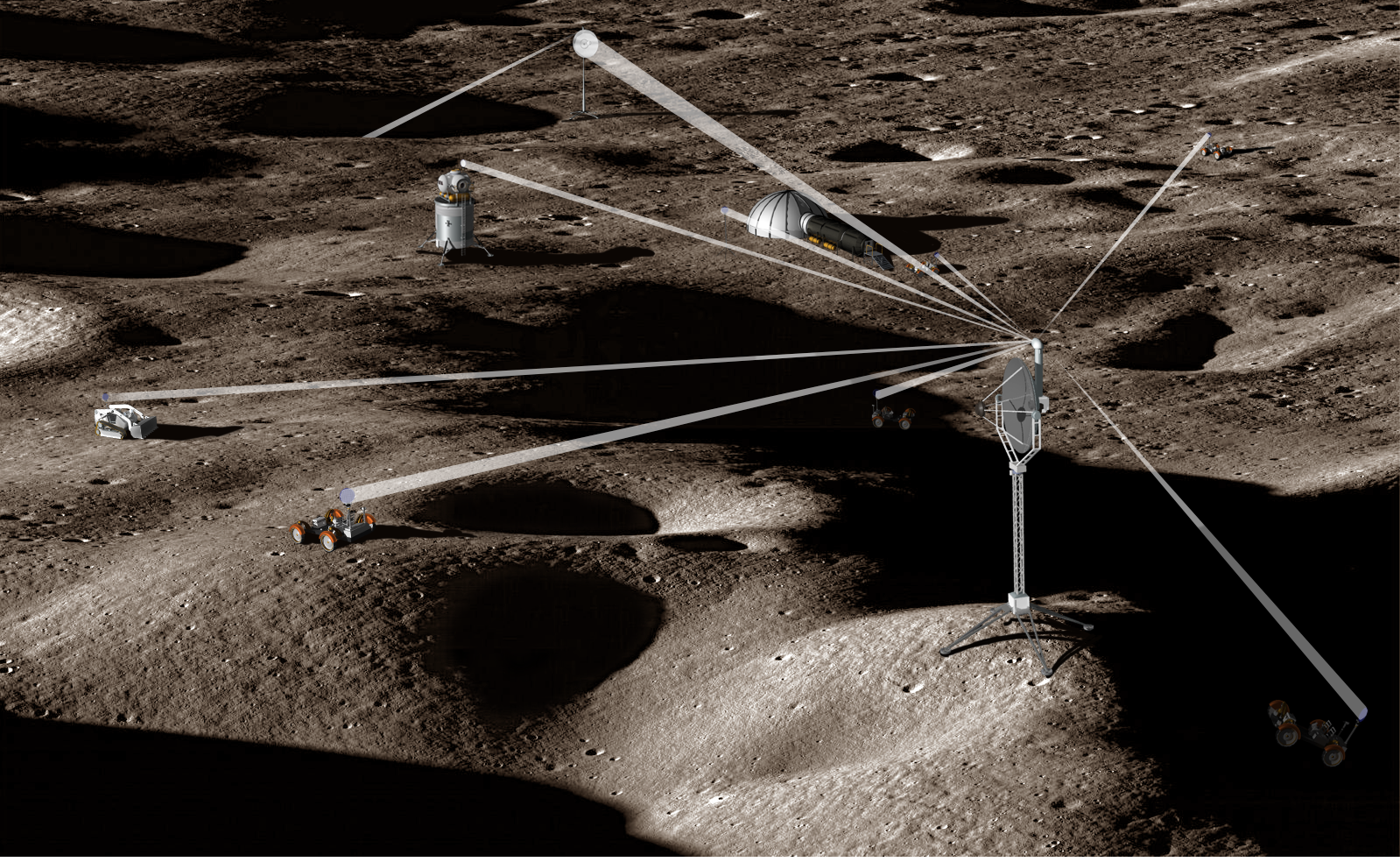Charles Taylor
NASA Langley Research Center
Light Bender is a novel concept for the generation and distribution of power on the lunar surface within the context of the Artemis mission and the “Long-Term Human Lunar Surface Presence” that will follow. The innovative concept is based on a heliostat that utilizes Cassegrain telescope optics as the primary means to capture, concentrate and focus the sun’s light. A second key innovation is the use of a Fresnel lens to collimate this light for distribution to multiple end users at distances of a kilometer or more away without substantial losses. The redirected and concentrated solar energy is then converted to electricity at the end user’s location using small (2m-4m diameter) photovoltaic arrays that can be mounted on habitats, cryo-coolers, or mobile assets such as rovers or ISRU elements. This concept is superior to alternatives such as highly inefficient Laser Power Beaming, as it only converts light to electricity once, and to traditional power distribution architectures that rely on mass intensive cables.
The value proposition of Light Bender is an ~5x mass reduction in mass over traditional technological solutions such as Laser Power Beaming or a distribution network predicated on high voltage power cables. Light Bender also enables the powering of scientific and ISRU systems in permanently shaded craters of the moon’s surface in ways that other systems can not. In the initial design, the primary mirror captures the equivalent of almost 48 kWe of sun light. End user electrical power is dependent on the distance from the primary collection point, but back of the envelope analyses suggest that at least 9kWe of continuous power will be available within 1 km, rivaling Kilopower’s stated output of 10kWe. The total system power level is scalable either by changing the size of the primary collection element, the size of the receive element, the distance nodes are separated, or by increasing the number of collection systems landed.
The Phase 1 system feasibility and trade studies will address the “known unknowns” of the system design that impact performance and operational suitability of the system. There are two primary areas of importance at this juncture: the optical mirror/lens design, and how this design manifests itself in a mechanical structure meant to deploy autonomously from a small stowed volume. The first analysis requires creation of a detailed optics system model and subsequent trade studies of element design, materials, and coatings to arrive at a solution that provides acceptable light propagation performance. Once a design is finalized, competing methods of autonomous deployment will be evaluated. Following the design/feasibility study, an evaluation of architectural alternatives for Light Bender will be performed in the context of a lunar base located near the Moon’s South Pole during sustained lunar surface operations. The primary figure of merit will be the minimization of landed mass. Comparisons will be made to known power distribution technologies such as cables and laser power beaming.































